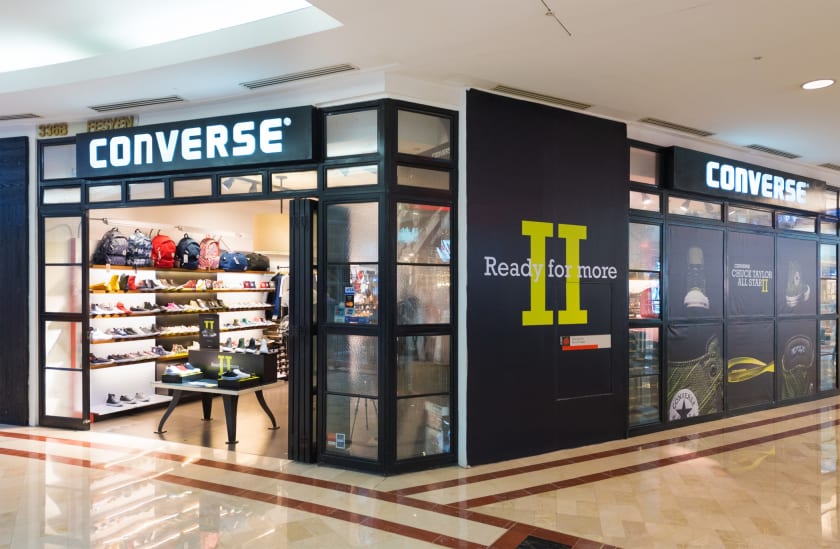Converse's Bold Marketing Strategy vs Boring Shoes



The main video of the American shoe company's new worldwide campaign splits the globe into two groups: those who wear shoes and those who wear sneakers. The ad identifies the characters of both shoe-wearers and sneaker-wearers by interspersing things that shoe-wearers do with things that sneaker-wearers do. In between these two methods, there is a copy on a black screen –'shoes go running at dawn, 'sneakers go home at dawn, 'shoe party, 'sneakers after-party,' and so on. The clip concludes with the slogan of the campaign and the brand logo.
Why do we enjoy it?

We seem to be developing a soft spot for worldwide accessory businesses that have been around since before most of our grandparents were born. Following Lacoste's excellent animation commemorating its 80th anniversary, here's Converse Store, a brand name you may not recognize on the spot but will undoubtedly exclaim, 'Oh, of course when you see a shoe. No, we're talking about sneakers.'
It's a simple notion to draw a clear divide between your brand's and target audience's personality and that of the next-best 'uncool' choice. Alcohol manufacturers do it all the time: put poison A drinkers against poison B drinkers in order to acquire the loyalty of their target audiences. Martini achieved it in a great split-screen attempt in 2011, and Blackberry did it as well, even while it was being topped by fancier phones.
The pre-requisite for such a campaign is precise information about the TG, its habits, and views. Conversely, with over 100 years of expertise, they had enough of it but luckily didn't hammer on its heritage to illustrate this claim. The one-minute short is an electric joy, with rapid cuts and a song that appeals to the skateboarding/partying youth.
There's a brilliant condensation at shoe-wearers here, and it's safe since that world is homogeneous. (Not something an alcoholic beverage company can simply achieve!) Furthermore, by being aspirational, the brand may attract non-participants into its rhythm. (Um, yes, being a 'cool' annoyance is that if you're 21.)
That being said, what about the piece that we'd all see but not notice right away? The keyword here,' sneakers,' isn't the brand. How many businesses back here can market openly for their own segment? Consider that as we Flipkart us some colourful shoes for the summer.
It requires determination to define what your brand is not.
Making a daring remark needs bravery. It takes confidence to declare, "If someone doesn't like us saying shoes are boring,' we don't want their business." That's when you go from a state of neediness to one of assurance. And people appreciate well-placed confidence. It has a real feel to it.
However, "be brave" does not imply "be dumb."
Making big remarks does not inevitably result in adoring admirers, as Abercrombie & Fitch discovered lately. It's critical that your audacious remark strikes a chord with your audience, and the only way to do so is to pay close attention to them.
You'll have to regularly alter and calibrate your message to ensure that you're standing for something that people believe in. This necessitates a certain amount of humility. You can't assume you know what your audience wants. You'll have to keep listening to them.
What's the difference between knockout brands and want tobes? Guts.
Converse Store has some things in common with Red Bull, which throws a person from the edge of space and gives out free beverages to weary or sleepy individuals.
Converse store established a recording studio in Brooklyn, New York, where artists may record for free. Converse Store does not take a portion of the income, own the songs, or require them to promote its shoes in any way. They do it just for the chance to be a part of the community that has accepted their brand.
Mashable's 2011 interview with Converse's Chief Marketing Officer Geoff Cottrill is a great source of insight. Here are some of his greatest points:

● "Our idea in social media has been to bring our voice to the medium, which involves behaving like a good party guest — we offer something to the table, and we listen more than we speak."
● "We believe that fans of any business want to know about products and appreciate offers, but they also want to have an emotional connection — we're trying to be a good home for that relationship."
● "The main message is that with social media, you must "let go." Forget about one-way communication techniques from the past. Social media isn't even a two-way discussion — it's far more sophisticated than that."
● "Our duty is to stay focused on developing outstanding things that our customers desire to wear while also participating in social media debates."
● "Converse Store shoes aren't about new technology or even about us. They are about what our consumer does in them. It works for other firms, for sure, but that's not our strategy." – In reaction to the concept of placing USBs with extra content in shoeboxes,
In addition, his Twitter bio reads, "I sell shoes, and I don't like Coldplay."
Coldplay wears shoes.
Shoes are boring.
Fashinza is a platform for B2B garment production. We assist clothing manufacturers in the production of their collections by linking them with suppliers. From design to delivery, we oversee the full manufacturing process; our partners need to place the order.



















